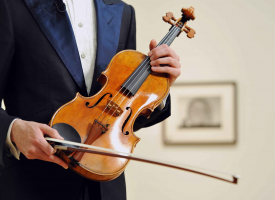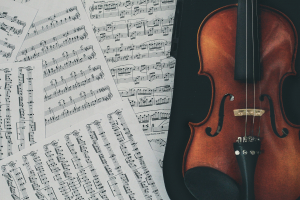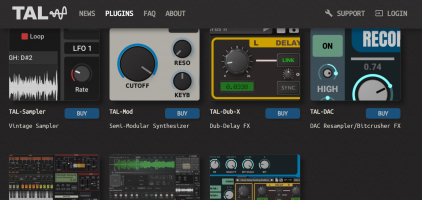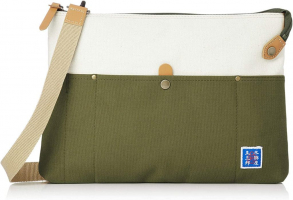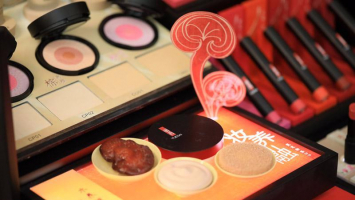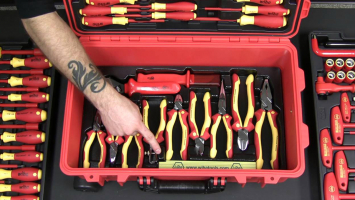Top 13 Most Intriguing Early Musical Instruments
Few complete musical instruments and musical instrument fragments have been uncovered since antiquity. However, each of them has something valuable to say ... read more...about the history of music in humankind. Learning about each of these can be crucial in educating today's young children about the possibilities and delights that come with making music. Many modern artists reproduce old instruments using the finest historical and musical knowledge that is available. Such instruments might be played in a concert, put on exhibit in a museum, or taken to school as a teaching tool. Toplist will list the top most intriguing early musical instruments in this article.
-
The early trombone designs that were popular during the Renaissance and Baroque eras are referred to as "sackbuts." The phrase sackbut is documented two decades before the term trombone, while the German term Posaune is documented much earlier. Before the instrument fell out of use in the eighteenth century, the English term sackbut was in use; when it was revived, the Italian term trombone took over. An ancient trombone or a facsimile is referred to as a sackbut in contemporary English. A sackbut differs from later trombones by having a smaller, more cylindrically-proportioned bore and a less-flared bell in addition to the trombone's distinctive telescopic slide, which is used to modify the length of the tube to change pitch. Unlike the earlier slide trumpet from which it evolved, the sackbut possesses a U-shaped slide with two parallel sliding tubes, rather than just one.
Sackbuts have always been associated with death and the afterlife because of their particularly melancholy and magnificent tone. The instrument served as a representation of divine presence, an instrument of judgment, and the voice of the angels. For example, L'Orfeo, Alceste, The Magic Flute, the Death March from Saul, and funeral aequales all have this meaning.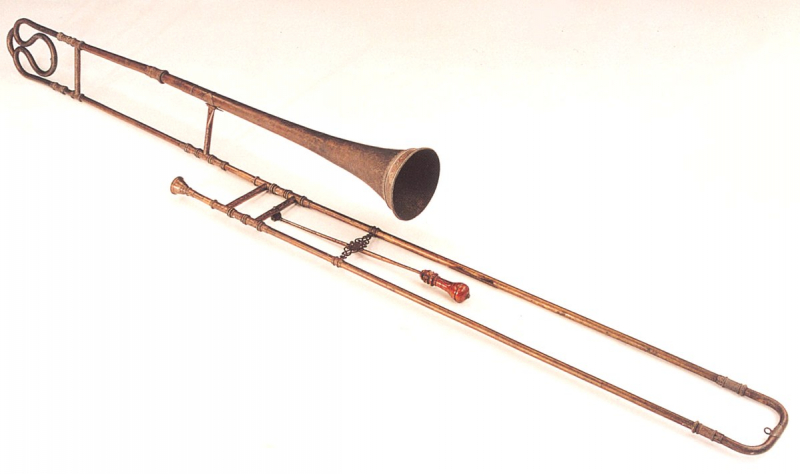
Wikipedia 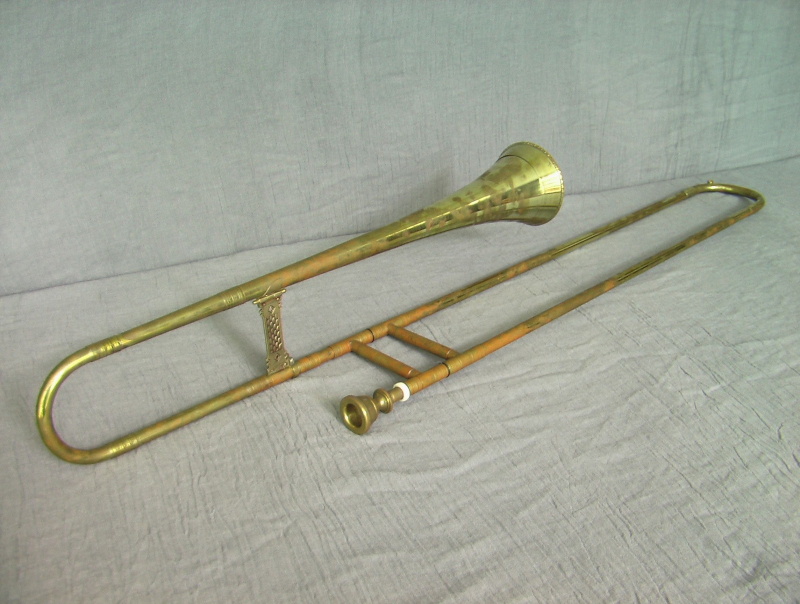
Grinnell College Libraries -
The lyre is possibly the antique instrument that is still most well-known to audiences in modern times. In ancient Greece, the stringed instrument was widely used. The lyre has even been cited as one of the instruments that best captures the traditional nature of Greece by certain experts. It was typically a key component of a student's musical education, much like the piano is now. An ancient musician would perform poetry readings or sing solos while playing the lyre.
The lyre's traditional shape consisted of two upright, immovable arms—occasionally horns—joined by a crossbar. A set of tuning pegs, which could be made of ivory, wood, bone, or bronze, would be used to tune the instrument. Seven strings, varying in thickness but usually, all the same, length, were stretched between the crossbar and a fixed bottom part. The strings were either manually pulled or with a plectrum by the musician.
The kithara, which had seven strings as well, the phorminx, which had four, and the tortoiseshell chess were all closely related stringed instruments. In fact, in various retellings of various myths, ancient scribes frequently used these four tools interchangeably.Atelier Skald 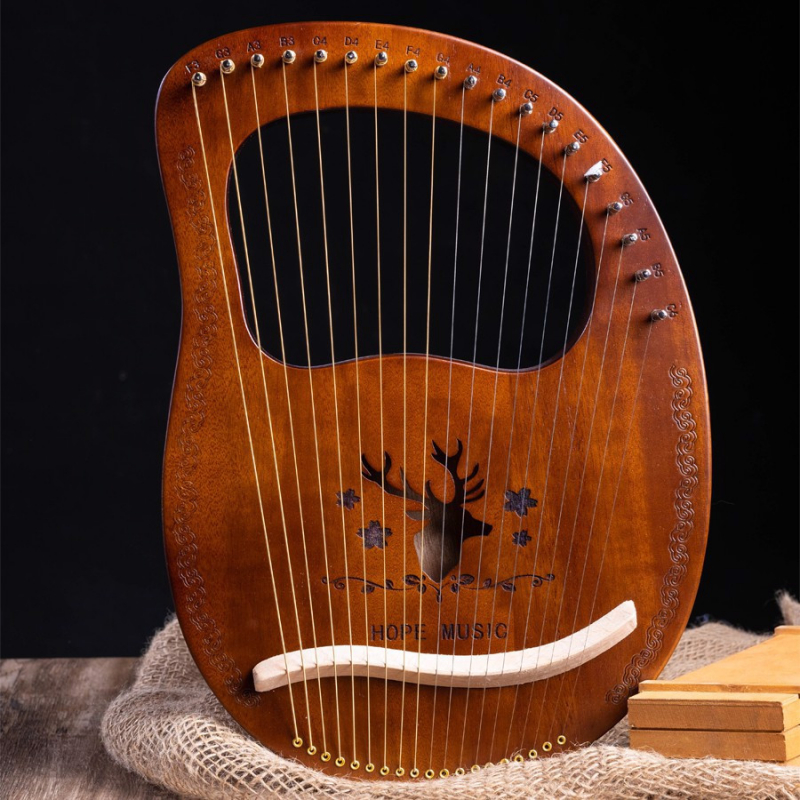
Hope Music -
A sistrum is a percussion-family musical instrument that is mostly connected to ancient Egypt. It comprises of a handle and a U-shaped metal frame between 30 and 76 cm wide that is made of brass or bronze. Its movable crossbars' tiny rings or loops of thin metal make a sound when shaken that ranges from a faint clank to a loud jangling. Its names were sekhem (sḫm) and sesheshet (sššt) in ancient Egyptian.
In addition to metal, a sistrum could be made of clay, wood, or both. The moveable jingle elements were built along horizontal bars, which served as the instrument's percussion components. A musician rattled the sistrum, which had a handle linked to this structure.
The U-shaped of the sistrum's handle and the frame is perceived as resembling the face and horns of the cow goddess Hathor, and it may have originated in the worship of Bat. It was employed in dances and religious ceremonies, especially in the worship of Hathor. It was also shaken to scare Set away and prevent the Nile from flooding. In Egyptian culture, the mother goddesses Hathor and Isis were the most prominent figures linked with the sistrum. In statues and figures on pottery, musicians are depicted playing the sistrum in ancient artwork.
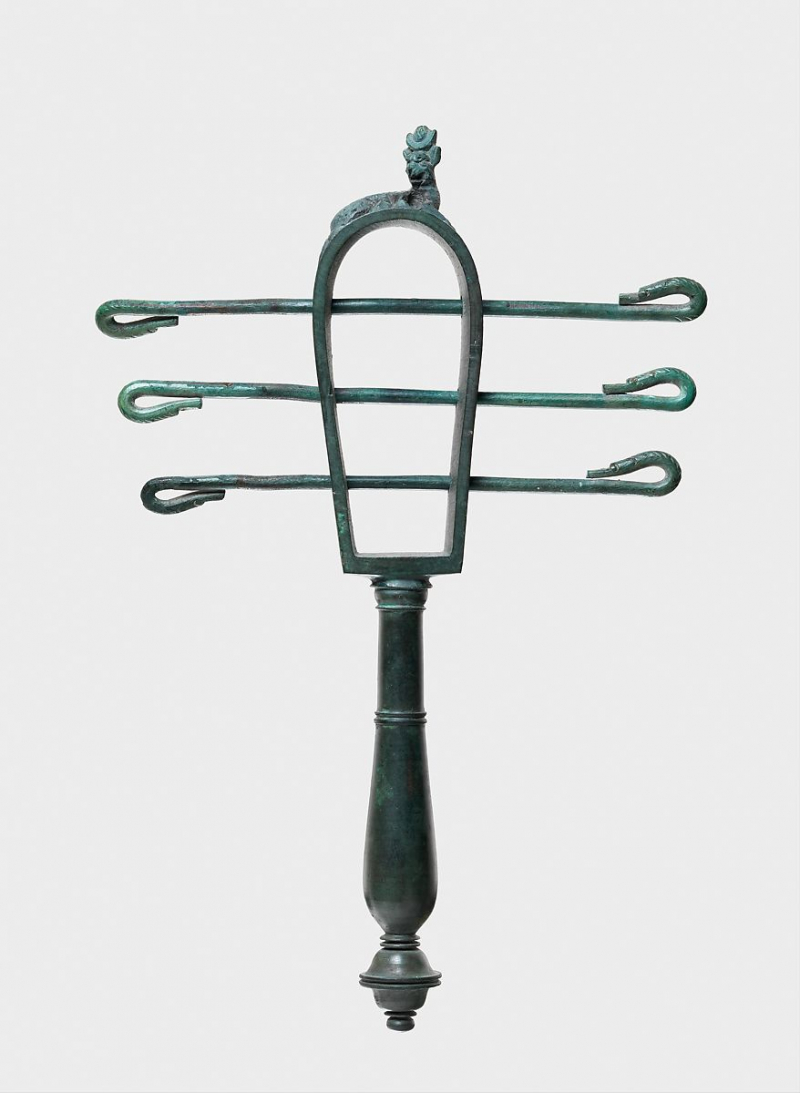
The Metropolitan Museum of Art 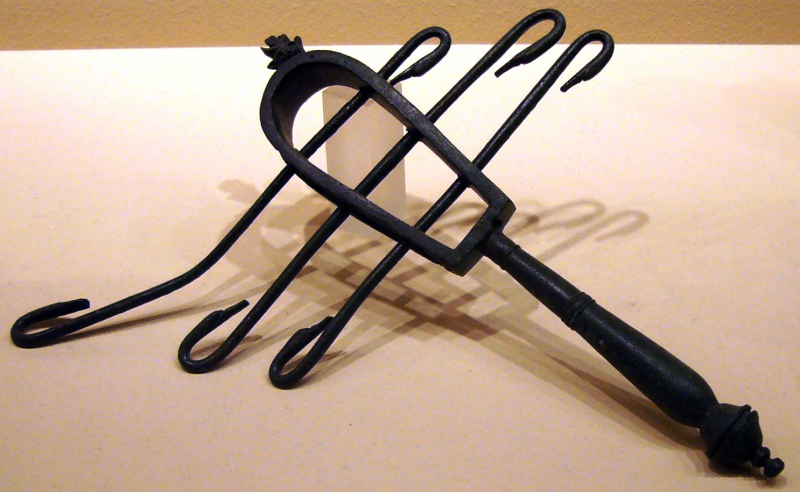
Wikipedia -
One of the most popular instruments in ancient Greece was the aulos, a reed-blown wind instrument that resembles a modern flute. It was frequently served as a side dish during theatrical productions, dinner parties, and other gatherings in private houses and was connected to the god of wine, Dionysos.
The aulos was made up of multiple separate parts that locked together, much like the modern flute. It might be constructed of bronze, copper, boxwood, ivory, bone, or ivory and cane. Additionally, it included a variety of mouthpieces that could produce varied pitches.
The double aulos, a device created by joining two pipes of the same size or different sizes at the mouthpiece, was also used by the ancient Greeks. If the two pipes were different lengths, an accompanying melody line was added to the sound. The Greeks also occasionally employed a leather strap to fasten the pipes to a musician's face for playing convenience. The discourse generally served as a support for all-male choral performances with their rich, powerful tones.
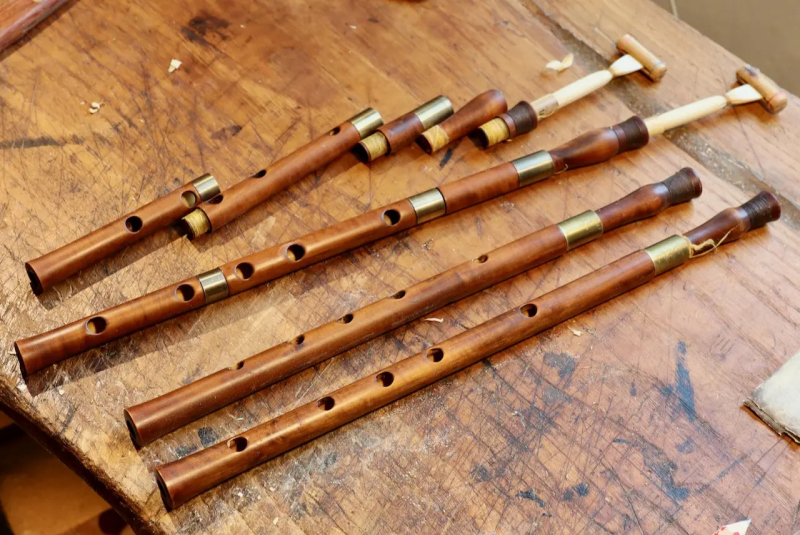
Max Brumberg Flutes 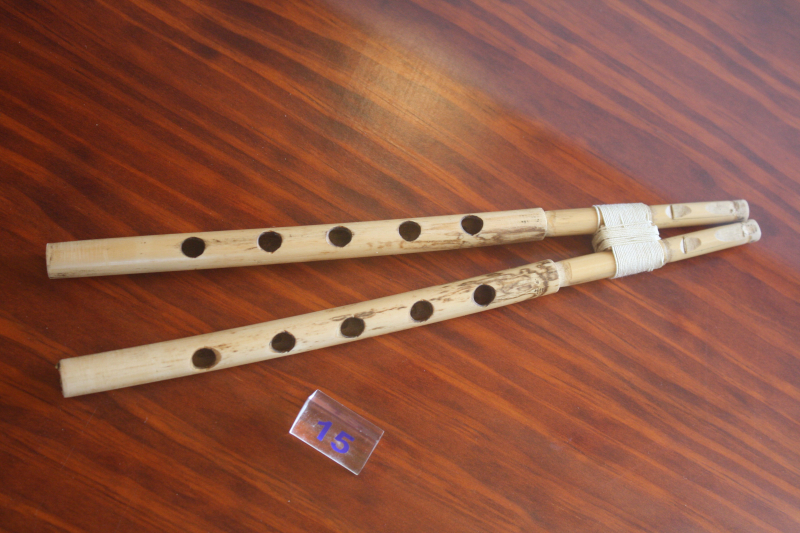
World History Encyclopedia -
The xun, a sort of vessel flute with an estimated age of more than 7,000 years, is one of the earliest-known ancient Chinese musical instruments. The xun, according to historians, was one of the most well-liked musical instruments at the period.
The xun frequently included animal representations and was typically made of earthenware clay. It was made into the shape of an egg with a flat bottom and several finger holes along its body, providing a one-octave range. The upper mouthpiece could be blown across to create sound by the player.
Archaeological sites across China have uncovered examples of the xun, with some of the later discoveries having been fashioned to resemble fruits or fish. Over the years, some of the more beautifully decorated xun were produced, and today, there are many priceless examples in both public and private collections.
The xun, a side-held flute primarily made of bamboo that was frequently played in conjunction with the chi, is mentioned in ancient sources. It was typically used by musicians as part of a traditional ritual ensemble. The xun has recently seen a rebirth after being used often up to around a century ago. Some modern Chinese orchestras still utilize a variant with nine holes.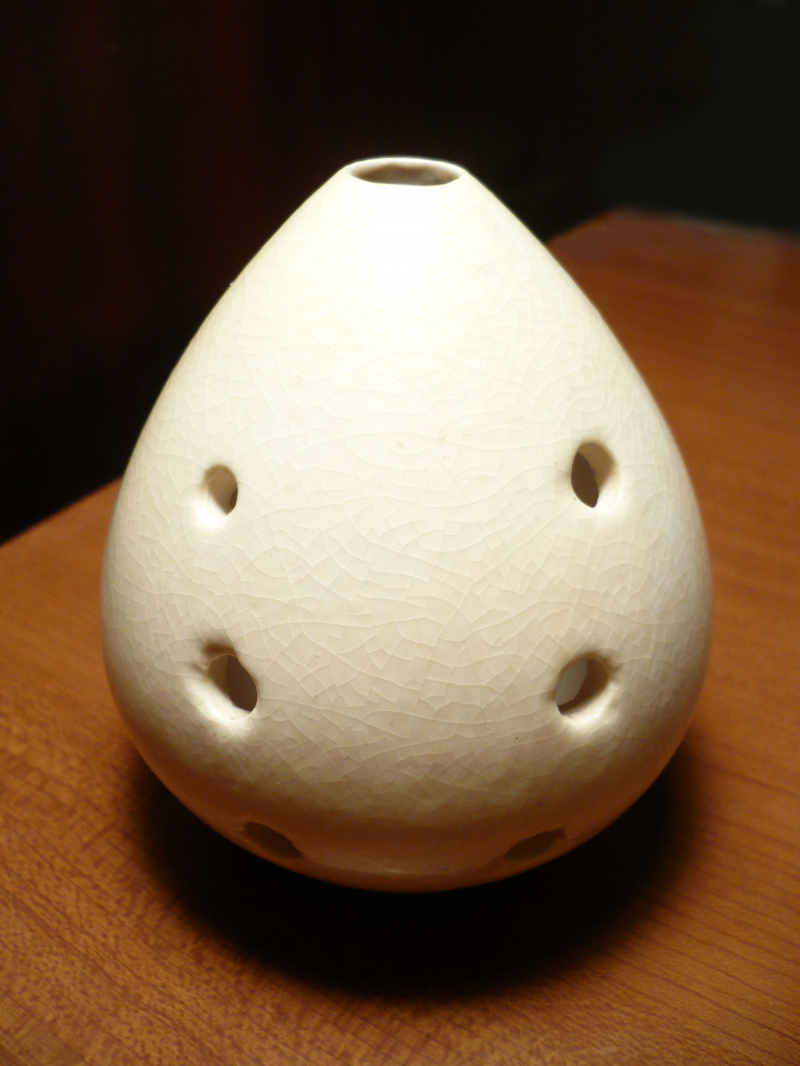
Wikipedia Eason Music Pte Ltd -
The rackett, Raggett, Cervelas, or sausage bassoon is a double-reed wind instrument from the Renaissance era that was invented toward the end of the sixteenth century but already replaced by bassoons by the end of the seventeenth. Another predecessor of the bassoon is the rackett.
Although the dulcian and the rackett sound remarkably similar, their appearances couldn't be further apart. The rackett is frequently referred to as a pocket bassoon since it can be as little as 412 inches (about 11 cm) tall. The Renaissance version featured nine parallel cylindrical bores connected in a series, whilst the Baroque instrument had ten bores. It was made of a short wooden or ivory cylinder. The channels on the Baroque instrument were at the top of the instrument, as opposed to the earlier forms where the channels were at the side or bottom of the instrument.
Noted by Praetorius: "Racketts have a very gentle sound, somewhat like someone blowing through a comb. When used in a group, they don't really stand out, but when violas da gamba is added, or when a single rackett is combined with other wind or stringed instruments, a harpsichord, or something similar, and is played by a skilled player, it may be a really beautiful instrument. On bass portions, it is quite pleasant and good to hear." The tone offers a rich, warm, vibrating sound with a good dynamic and tonal range. The timbre has been compared to "a bassoon and a kazoo combined."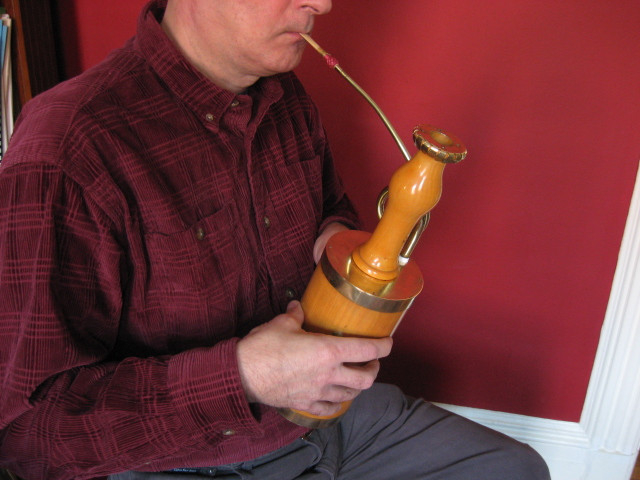
Kopp Reeds Shipbrook -
The crumhorn is a double-reed woodwind instrument that was most popular during the Renaissance era. Crumhorns are once again being played in current times, especially since the 1960s, when there has been a resurgence of interest in early music. Additionally, it was written as cremorne, krumhorn, krumhorn, and krummhorn.
A capped reed instrument, the crumhorn. Its structure resembles that of a bagpipe's chanter. A long windcap has a twin reed mounted inside of it. Creating a musical note by blowing through a wind caps slot. By opening or shutting finger holes along the pipe's length, the note's pitch can be changed. The crumhorn has an odd shape; the end is curved upward in a curve that resembles the letter "J." The curve is only ornamental and has no effect on the sound.
Although they are quieter than their conical-bore siblings, the Rauschpfeife and Shawm, crumhorns produce a loud buzzing sound. Theoretically, it is conceivable to get the reed to overblow a twelfth above the fundamental note, but in fact, all playing is limited to the fundamental series because the reed is not retained in the mouth (and even if done, would result in a gap of two notes in the scale on historical instruments). Cross-fingerings can be used to play crumhorns chromatically, with the exception of the minor second above the lowest note.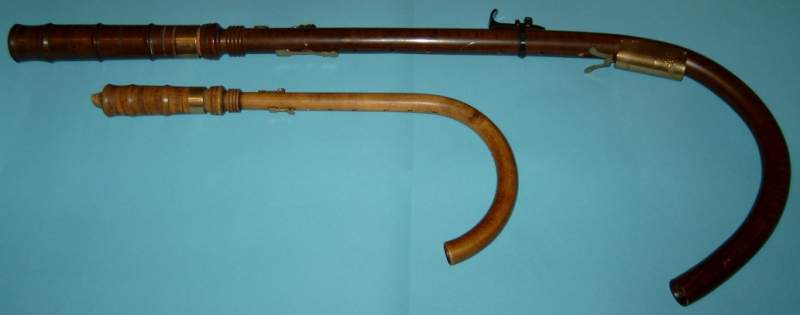
Wikipedia Richard Bobo -
The conical bore shawm is a double-reed woodwind instrument that has been produced in Europe since the 12th century. The oboe family of related instruments in classical music eventually replaced it after it peaked in prominence during the medieval and Renaissance eras. The Persian sorna, the ancient Greek aulos, and the Armenian duduk are just a few examples of double-reed instruments with a lengthy history in Southern Europe and the East.
The shawm's body, which is often made from a single piece of wood, ends in a bell with a flared end that resembles a trumpet. Shawms were produced in a range of sizes starting in the 16th century, from sopranino to great bass, and a consort built completely of shawms was capable of playing music in four and five parts. Except for the tiniest, all later shawms contain at least one key that allows the compass to be extended downward. The keyword is often concealed by a perforated wooden cover known as the fontanelle. The bassoon-like double reed, made from the same Arundo donax cane used for oboes and bassoons, is inserted directly into a socket at the top of the instrument, or in the larger types, on the end of a metal tube called the bocal. The pirouette, a small wooden attachment with a cavity in the center resembling a thimble, surrounds the lower part of the reed—this provides support for the lips and embouchure.
The player has limited contact with the reed and consequently, limited control over dynamics because only a small portion of the reed extends past the pirouette. The shawm has a piercing, trumpet-like sound that is ideal for outdoor performances thanks to its conical bore and flaring bell as well as the playing style required by the use of a pirouette.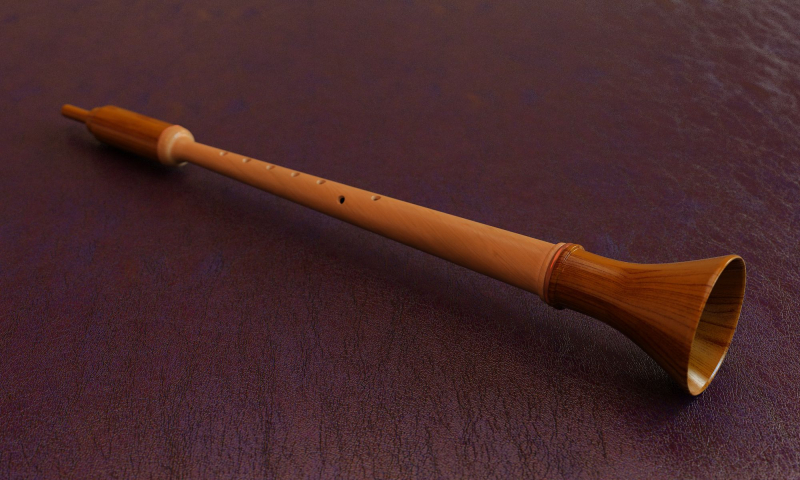
Pinterest 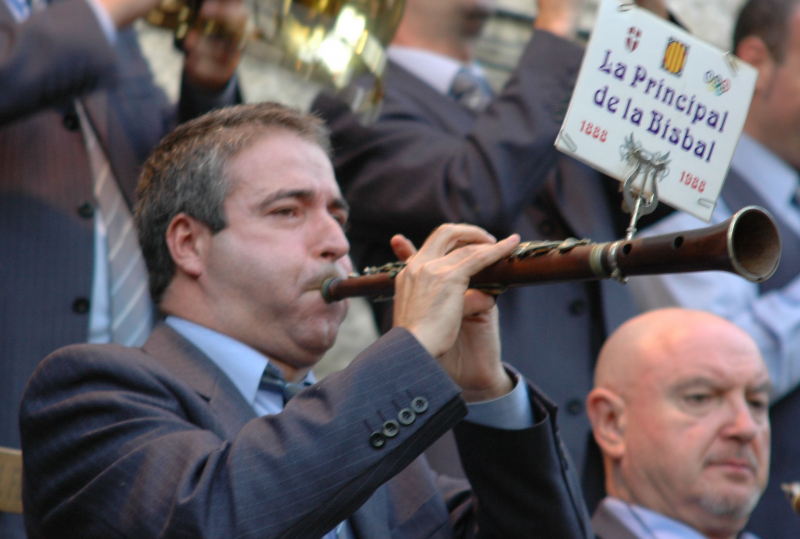
Wikipedia -
The earliest instrument ever discovered is the bone flute. It was constructed by Neanderthals in Europe and is thought to be 60.000 years old. The flute is constructed from a cave bear bone and was found in Slovenia's Divje Babe cave. an extinct mammal from 24.000 years ago.
The nearly finished bird-bone flute, which is constructed from the naturally hollow wing bone of a griffon vulture, has five finger holes and a V-shaped mouthpiece. It is about 0.3 inch (8 millimeters) broad and was once roughly 13 inches (34 centimeters) long. It has been determined that older flute fragments discovered at the neighbouring Geissenklösterle site date to about 35,000 years ago.
According to the researchers, the ancient flutes are proof of an early musical tradition that probably aided modern humans in communicating and creating stronger social bonds. If you want to see bone flute for yourself, go to the National Museum of Slovenia, which has it on display.
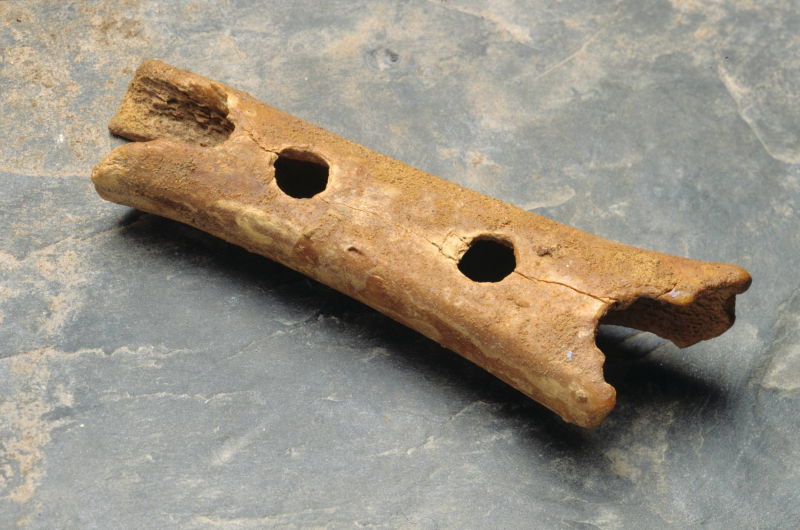
Narodni muzej Slovenije 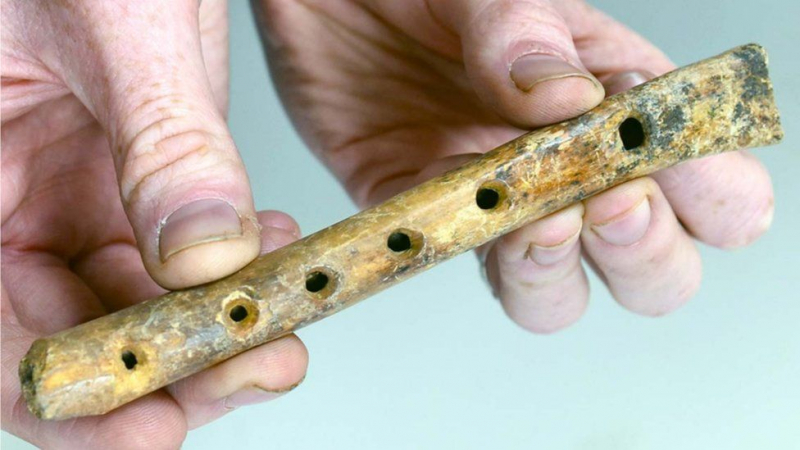
BBC -
The lute is described by Curt Sachs as being "made of a body, and of a neck which functions both as a handle and as a way of stretching the strings beyond the body" in the terminology part of The History of Musical Instruments. Going back in time, it is the predecessor to the guitar, first appearing in Ancient Mesopotamia more than 5000 years ago. The lute in the picture was acquired in 1951 in West Africa. Even though the one in the picture might have been created recently. This far older ancient Egyptian painting below shows how similar they are.
This painting, which shows lute players and was discovered in the Lost Tomb of Nebamun, is thought to have been created around 1350 BC. Despite the fact that lute instruments have been around for 1700 years before this artwork.
The resonance chamber of the lute is composed of carved wood, and the gut from an animal's stomach is used to make the strings. In fact, gut strings were common on the majority of early stringed instruments, including guitars. Gut strings are still available, although they are exceedingly expensive.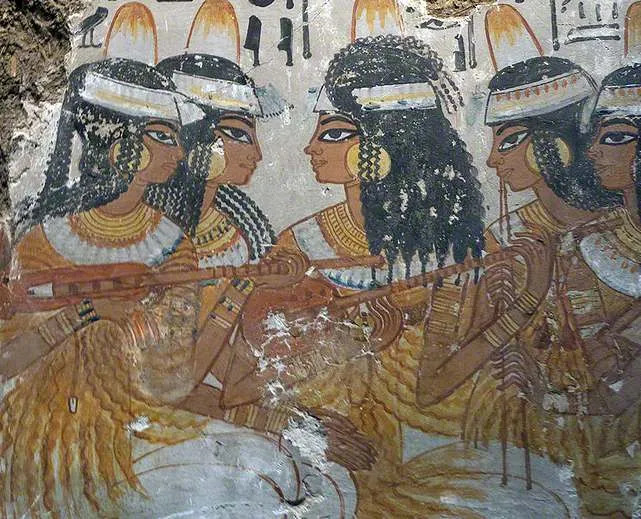
meteoritesound.com 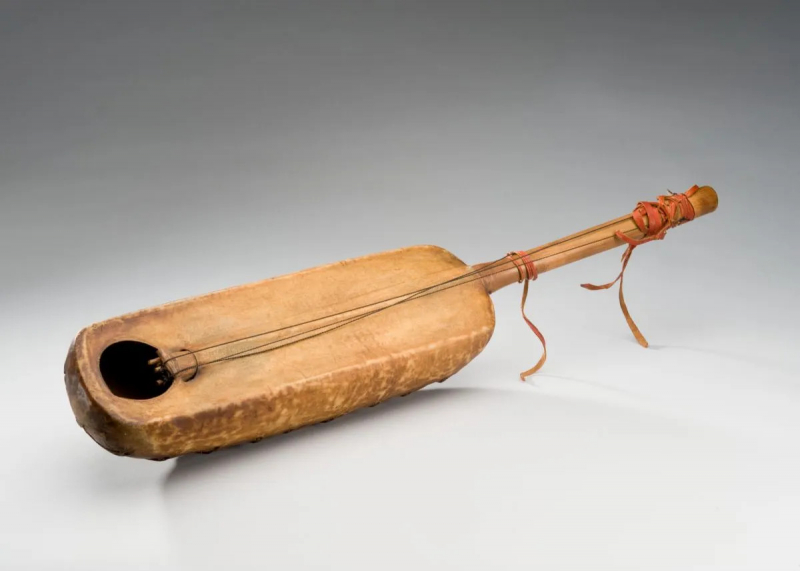
meteoritesound.com -
This clapper instrument dates back between 2000 and 3000 years in ancient Egypt. The clapper's upper portion is depicted in the photograph, and it once had a handle attached to it. A clapper is exactly what it sounds like; it consists of two devices that, when crushed together, produce a sound similar to that made when we clap our hands. Two long, solid pieces make up the object, and when they are knocked together, the sound is produced. They are simple to make and play instruments that are found in many different civilizations all over the world. Clappers come in a variety of shapes and are available in a wide range of materials. The most typical material is wood, but other options include metal and ivory. This instrument has existed in many forms all over the world, for example, Aboriginal people in Australia have used two boomerangs and Hawaiians have used small rocks (ili ili) to create a similar sound.
Clappers were among the first percussion instruments used in Ancient Egypt, and they were employed in ceremonies, funerals, and banquets. One variation of the inflated plastic clapper is the plastic "thundersticks" that have recently gained popularity at sporting events.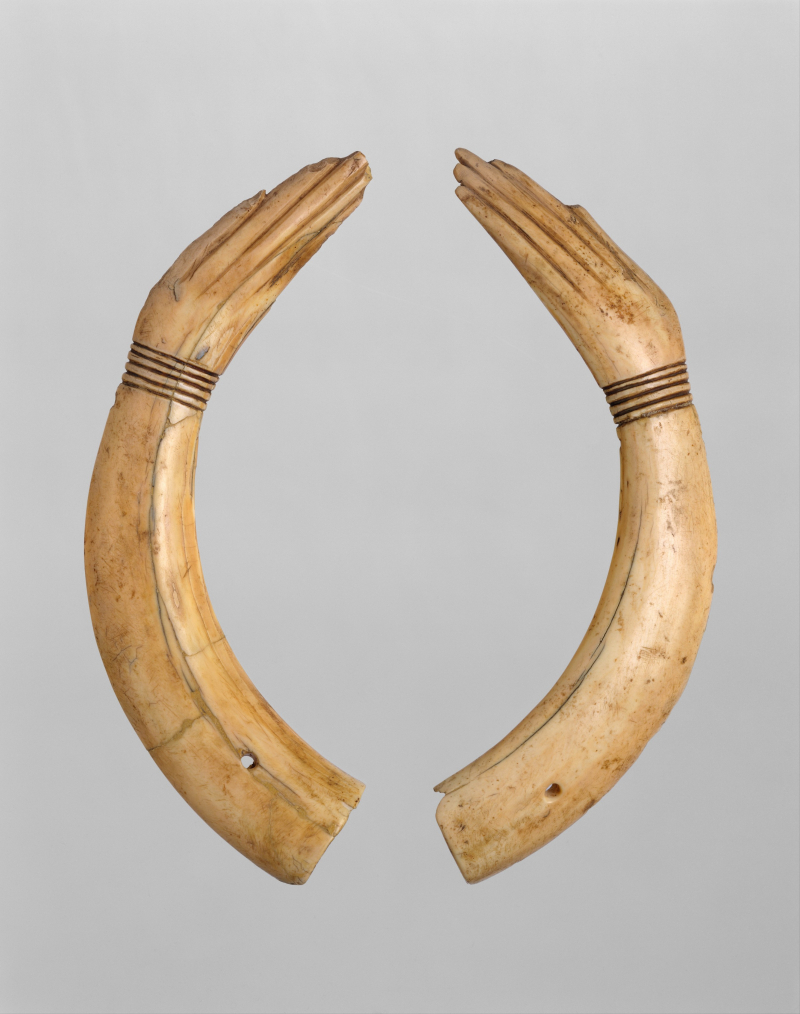
Simple Wikipedia 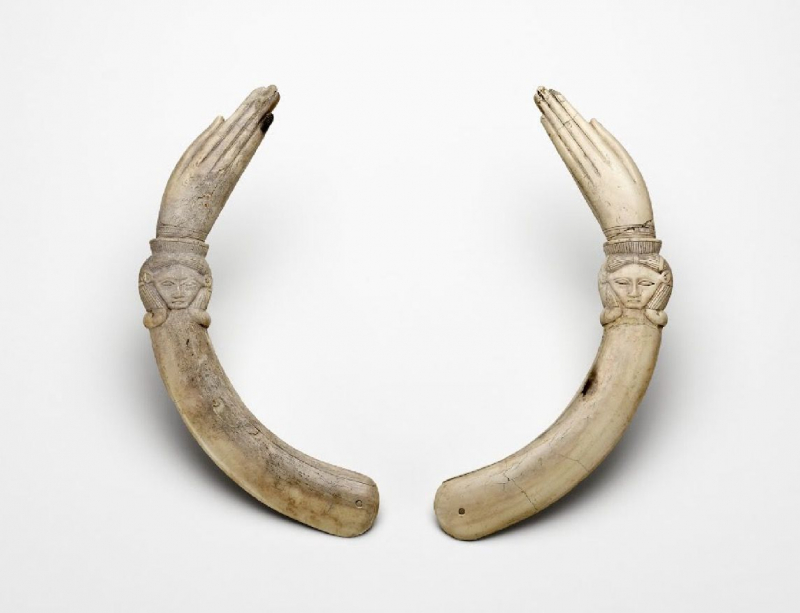
Pinterest -
The earliest gong ever discovered dates back to some time between 202 BC and 220 AD. Gongs are percussion instruments that have their origins in the southeast and east Asia. Flat metal discs called gongs are often pounded with a mallet. They can vary in size from little to large, and they can be tuned or not.
It is hammered with a mallet or hammer to produce a powerful sound that can sound either clean or piercingly loud. The sound pressure levels can go as high as 106db, if not higher. It is the same as hearing a jet take off from 1,000 feet (305m).
In Chinese and Buddhist temples, gongs have been used to call people together and to signal when it is time to wake up and when it is time to retire to bed. However, this instrument has been used for a wide variety of other purposes, including playing musical compositions with several gongs and displacing crowds with a loud sound.
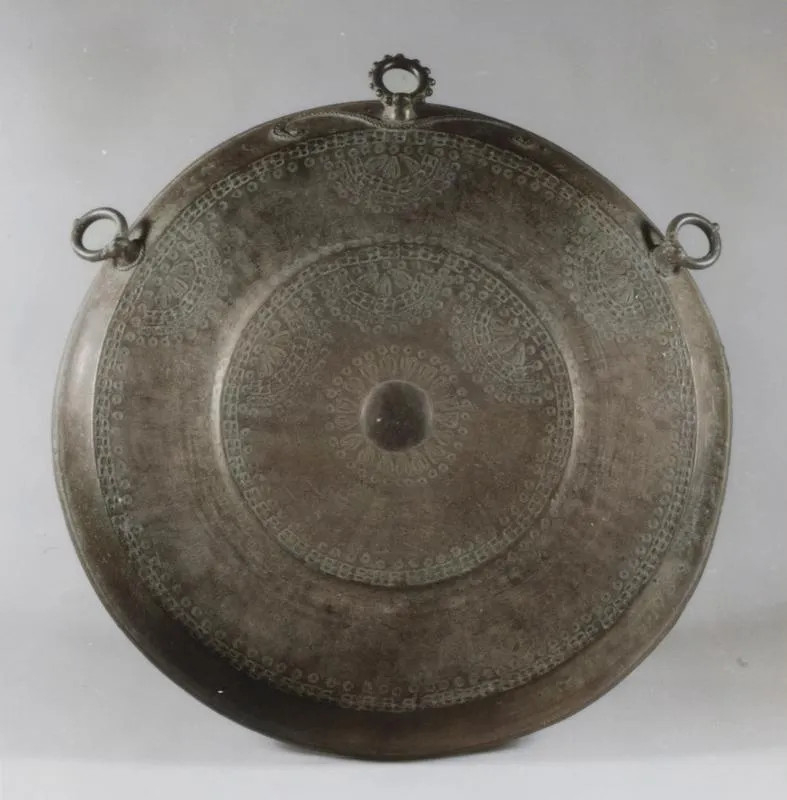
meteoritesound.com 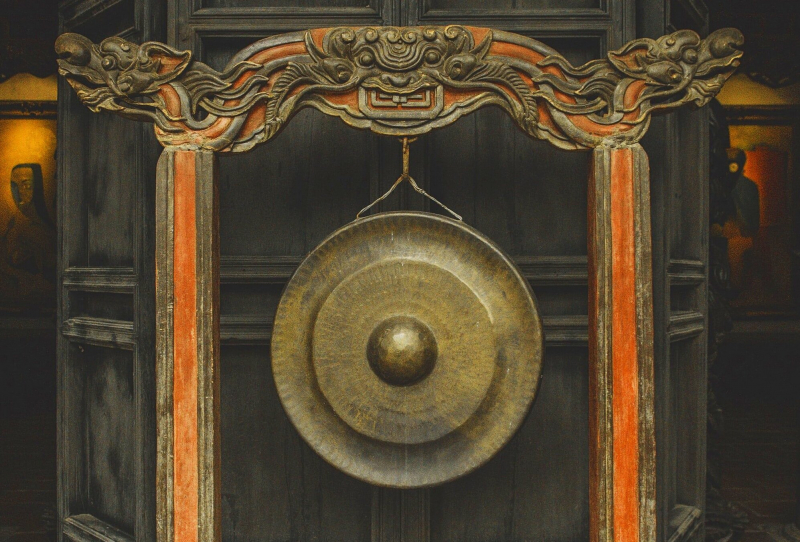
Delamora Transformational Experiences -
The sheng is a vertical pipe-based mouthblown polyphonic free reed instrument from China. With depictions of instruments similar to this one dating back to 1100 BCE, it is one of the oldest Chinese instruments. Original instruments from the Han era are still on display in museums today. The sheng has typically been played as an accompanist for solo suona or dizi performances. It's a crucial component of kunqu and certain other kinds of Chinese opera. The sheng is also used by traditional small ensembles, such as the wind and percussion ensembles in northern China. Both melody and accompaniment are used with it in the contemporary large Chinese orchestra.
Because it can make a sound on both the inhale and exhale, the Sheng is clearly related to the Harmonica. Because it is polyphonic, numerous notes can be played at once to create chords. The musician covers the holes, much like on a flute, to make various notes.
Bamboo is used to make the pipes, while wood is used to make the remainder of the instrument. In the past, bamboo was also used to make reeds, but today metal is utilized instead. A narrow strip of material called a reed vibrates when air passes through it.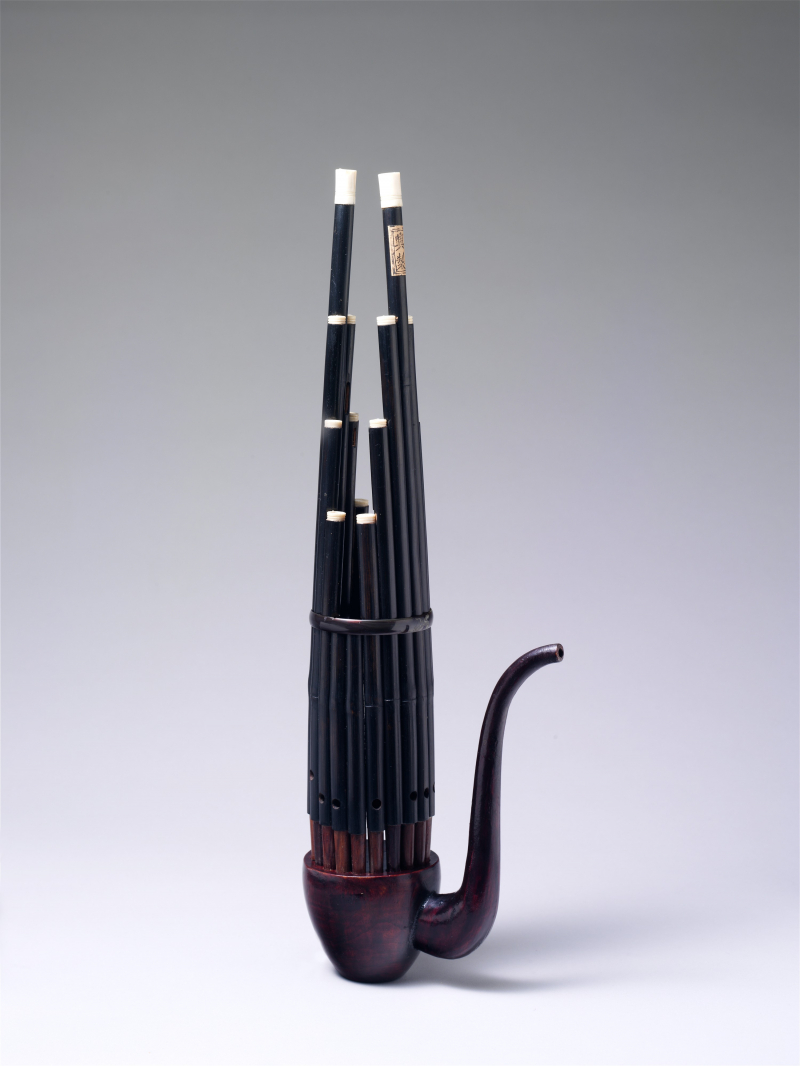
Wikipedia Philharmonia Orchestra















